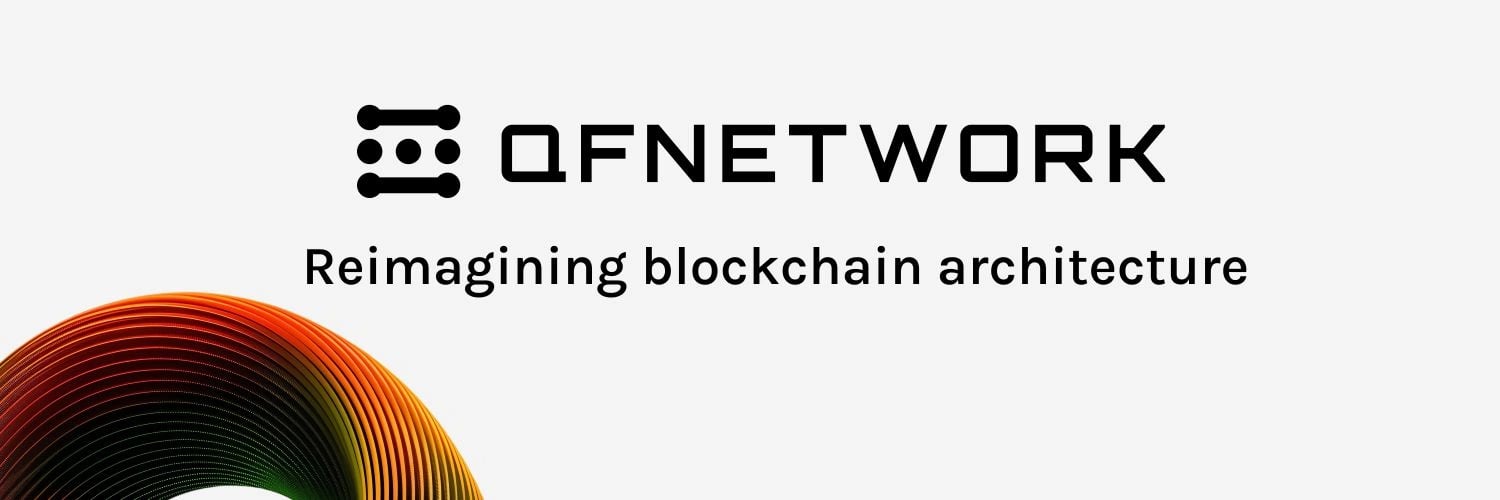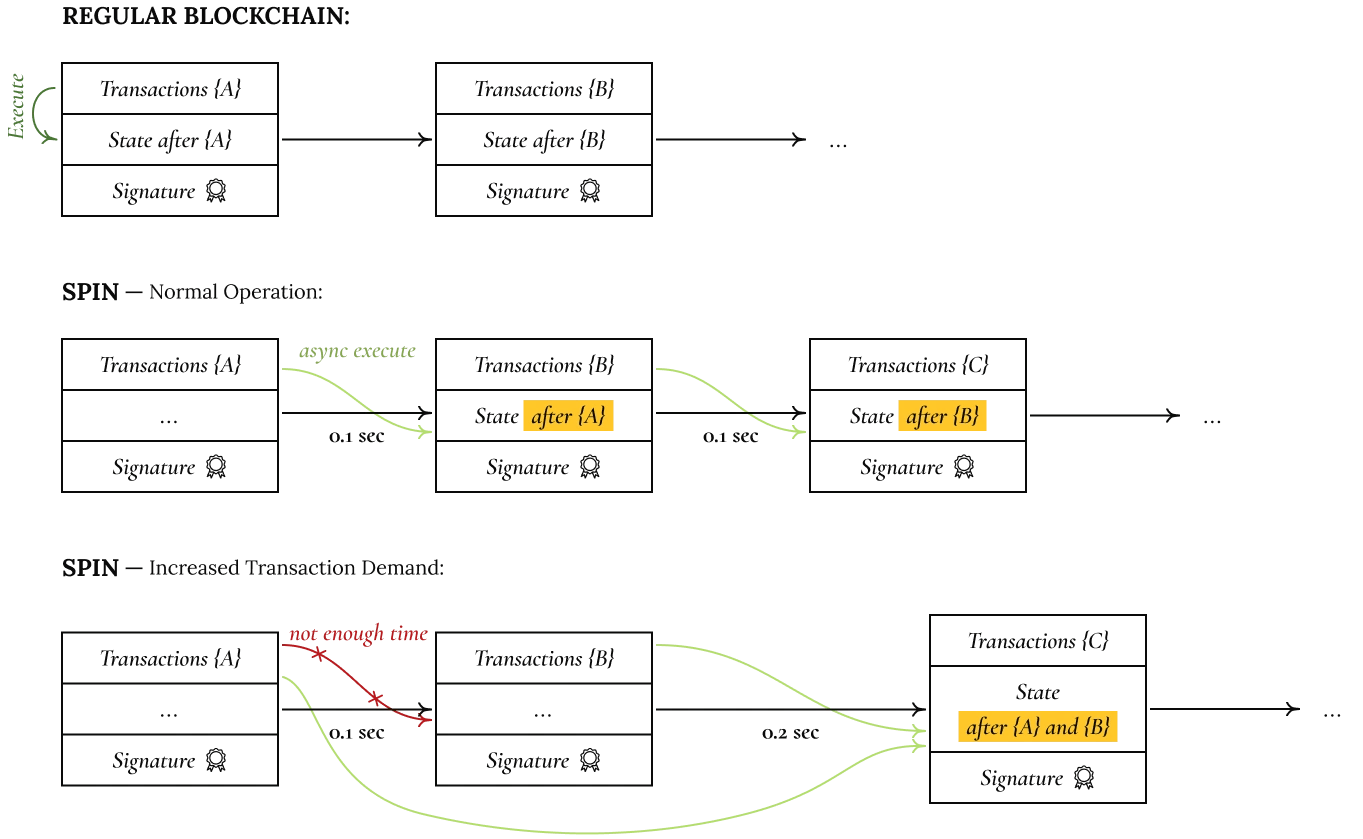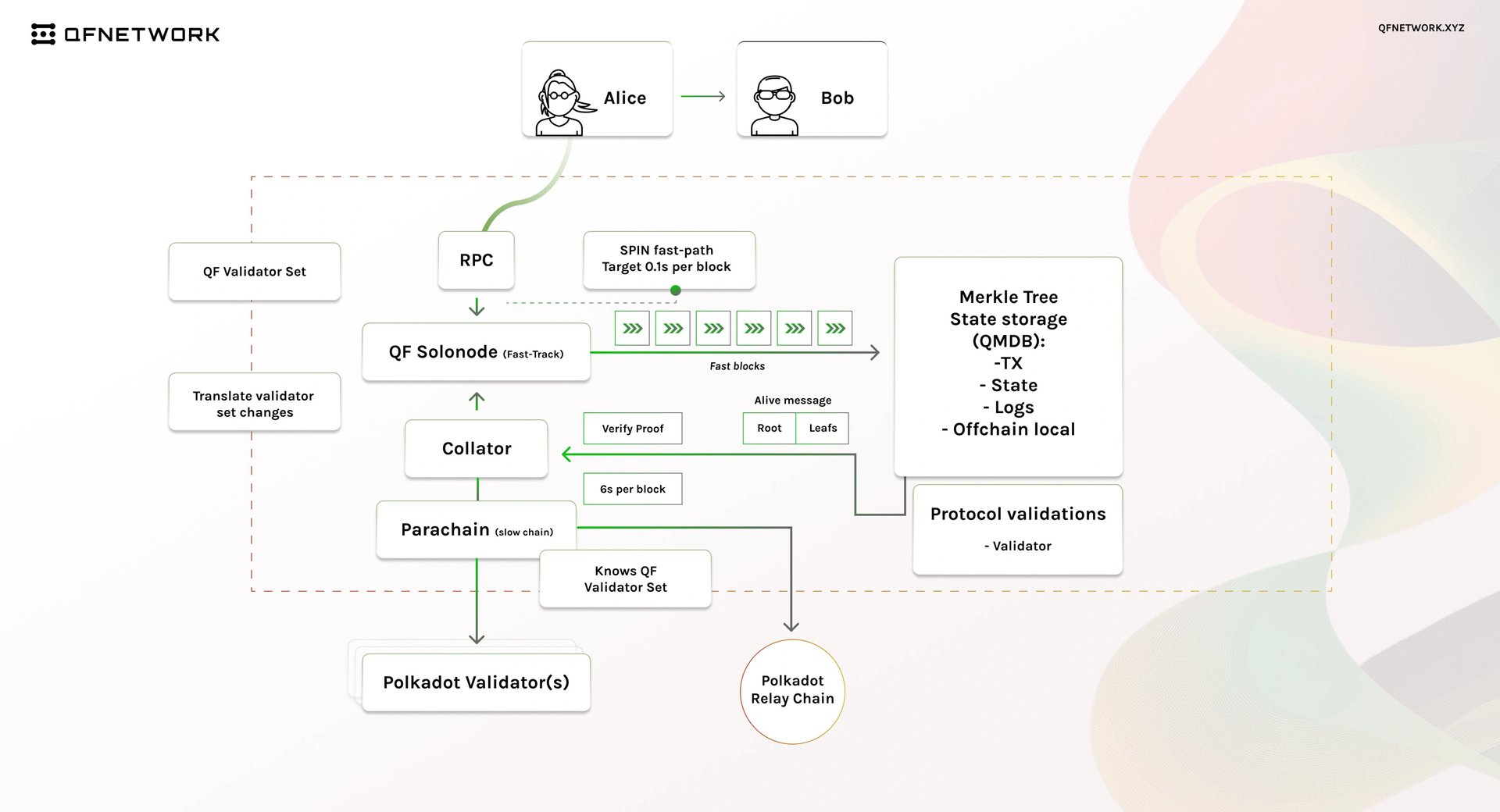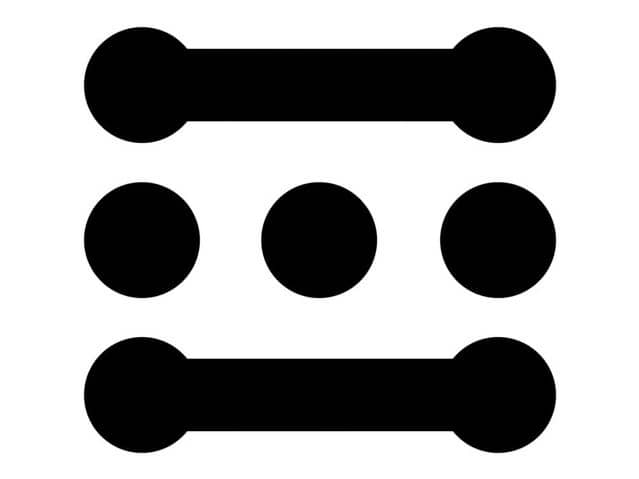Subscribe to wiki
Share wiki
Bookmark
Quantum Fusion Network
Quantum Fusion Network
Quantum Fusion Network (QFN) is a Layer 1 blockchain platform designed for decentralized applications (dApps), focusing on speed and usability. It aims to address the limitations of existing blockchains to facilitate mainstream adoption of dApps. [2]

Overview
The Quantum Fusion Network (QF Network) is a blockchain platform that addresses decentralized applications' performance, scalability, and usability challenges. Built on the Substrate framework, it combines several advanced technologies to enable sub-second block times, high transaction throughput, and efficient smart contract execution. These include the SPIN consensus protocol for rapid finality, PolkaVM for high-performance contract processing, and parallel transaction handling to support real-time responsiveness.
QF Network emphasizes accessibility and developer support by offering a native-first SDK and tools for integrating complex computations through verifiable off-chain workers. It also supports zkTLS for secure Web2 data interactions and employs forkless runtime upgrades to enable continuous improvements without disrupting the network. Optimized for mobile and light clients, the network uses nQUIC and WebRTC for low-latency communication to bridge the gap between Web2 user expectations and Web3 capabilities while maintaining decentralization. [1] [2] [4]
Technology
SPIN Consensus
The SPIN consensus protocol (Short-term Parallel Incremental Network agreement) is a custom mechanism used by the Quantum Fusion Network (QFN) to achieve faster block finality and greater flexibility than traditional Proof-of-Stake (PoS) setups. Instead of fully relying on Polkadot’s consensus and longer finality times (12–18 seconds), QFN runs its lightweight finality gadget with its validators, targeting block times of 0.1 seconds and allowing developers to choose different levels of security depending on the transaction type.
While QFN leverages Polkadot’s infrastructure for enhanced security and validation of finalized blocks, it avoids becoming a typical Layer 2 by retaining its consensus system. This hybrid approach allows QFN to maintain speed and usability while selectively “promoting” blocks to Polkadot for added security when needed, such as for high-value transactions. [1] [5]

Sequencing & Execution
The Quantum Fusion Network separates transaction sequencing from execution to enable parallel processing and improve overall speed. Blocks are produced by ordering valid transactions without immediately updating the network state, allowing execution to occur in parallel or after a delay if needed.
This design ensures consistent block production even if transaction execution falls behind. Block production deadlines adjust dynamically to maintain system integrity, increasing if execution lags and reducing block capacity until synchronization is restored. The approach also minimizes the viability of selfish MEV strategies, and system parameters, like block time, can be fine-tuned without hard forks due to Substrate's flexibility. [1]
PolkaVM
PolkaVM is Quantum Fusion Network’s smart contract execution environment. It is built on the RISC-V instruction set to enable high-performance, low-latency execution. It supports custom precompile functions and forkless upgrades, allowing the network to introduce advanced features like zero-knowledge proof verification or blockchain bridging as needed.
PolkaVM allows developers to define state transitions independently rather than relying solely on built-in functions to support flexibility in decentralized application development. It also includes an EVM compatibility layer, enabling projects to migrate existing Solidity code with minimal modification. While emulation introduces some overhead, the overall system speed may still surpass native EVM performance on other chains. [1]
Networking
Quantum Fusion Network uses two networking protocols to optimize communication: nQUIC and WebRTC. nQUIC is a modified version of the standard QUIC protocol used in HTTP/3, adapted for peer-to-peer environments by replacing centralized TLS key exchange with the decentralized NOISE protocol. This allows QFN nodes to benefit from modern internet infrastructure while maintaining privacy and resistance to censorship.
For in-browser and light clients, QFN relies on WebRTC, a widely adopted peer-to-peer protocol typically used for video and gaming applications. This approach avoids the need for centralized components like DNS or HTTPS certificates, enabling decentralized communication without compromising performance or compatibility with browser-based environments. [1]
Cap’n Proto
QFN’s RPC layer uses Cap’n Proto, a high-performance, binary-based protocol chosen over traditional JSON-RPC due to its speed, compactness, and efficiency. Cap’n Proto allows zero-copy decoding, meaning data received from the network doesn’t require transformation before use. It also supports promise pipelining, enabling devices like smart appliances to chain dependent queries without waiting for each one to complete, improving responsiveness and resource usage.
To avoid centralized architectures, QFN aims for local-first RPC discovery. Instead of relying solely on centralized DNS, the SDK will prioritize connecting to nearby QFN nodes (like those running on a user’s laptop) using UDP broadcast, mDNS, or UPnP. Centralized RPC servers can still be used as fallbacks (e.g., by a device manufacturer), but decentralization and performance remain the primary design goals. [1] [6]

QF
QF is the native utility token of the network, used to pay fees for transaction processing and data storage. It also serves as the governance token, allowing holders to participate in decision-making about network changes. QF has a total supply of 10M tokens. [3] [7]
Partnerships
- Pantheon
- PalmAI
- NFINITY AI
- Messier M87
- AstraAI
- PolkaVM
- LayerZero
- Shadow Node
- AIgentX
See something wrong?
